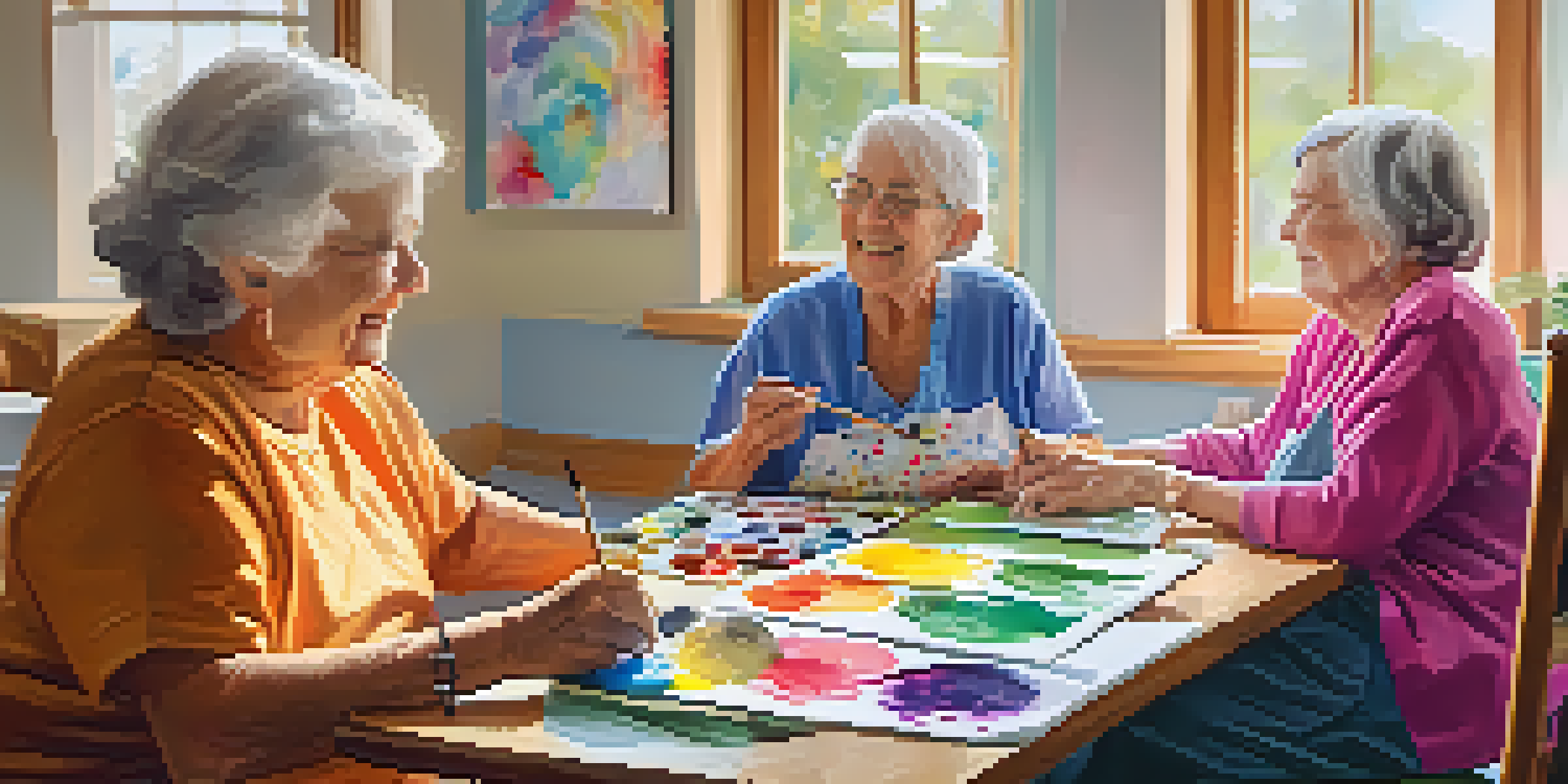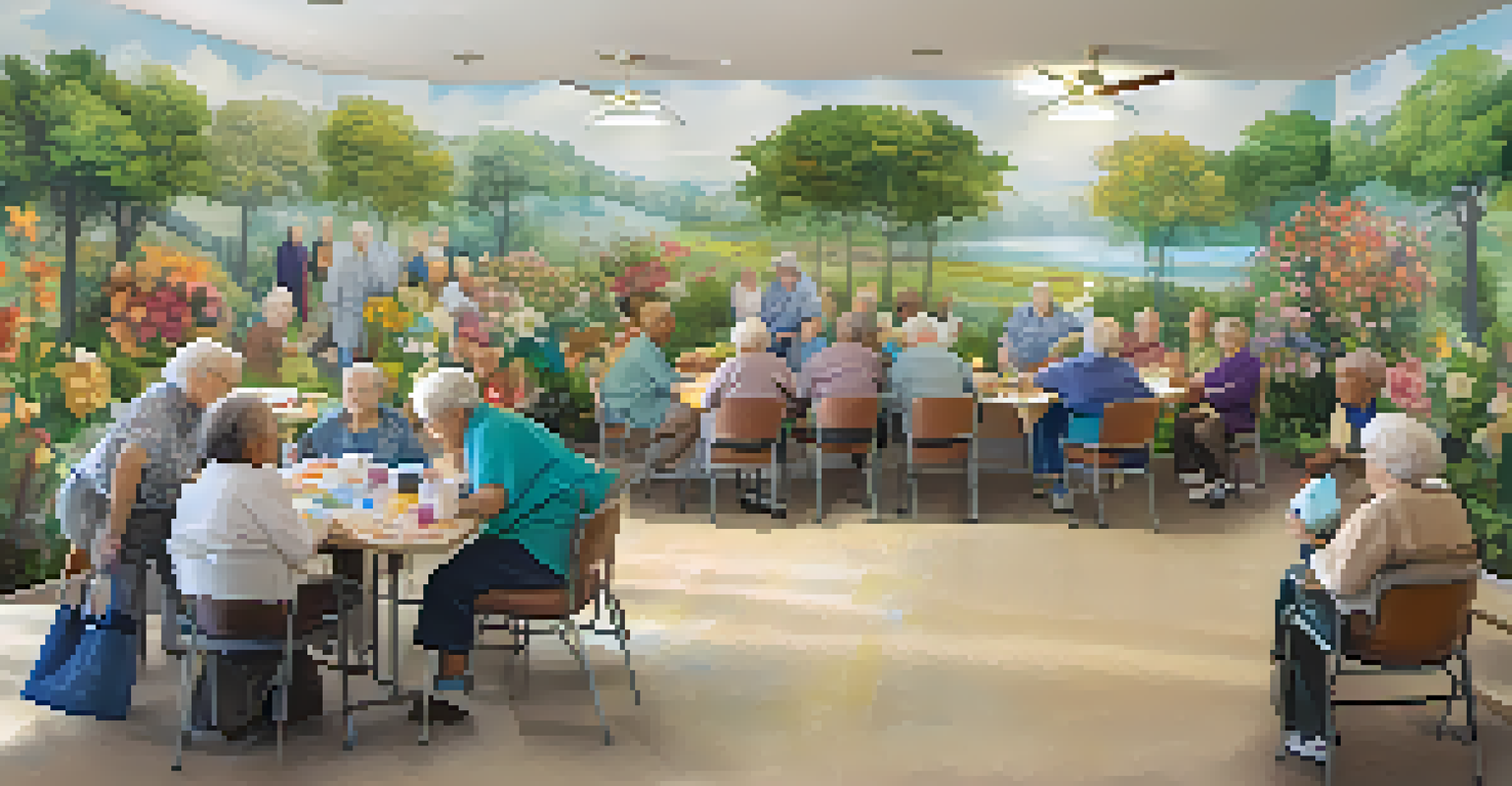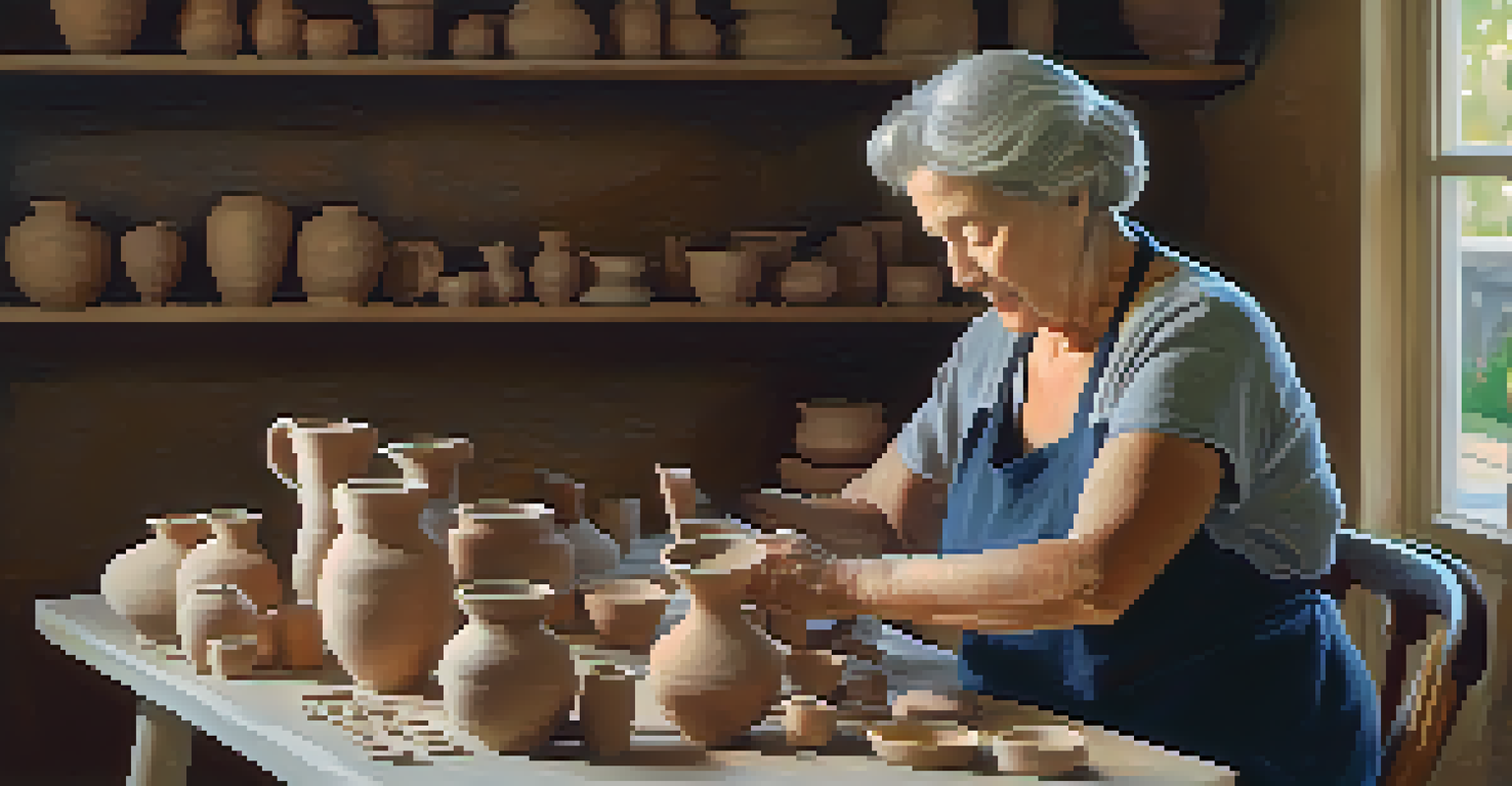The Transformative Power of Art in Nursing Homes

Art as a Tool for Emotional Expression in Seniors
Art provides a unique outlet for emotional expression, especially among seniors who may struggle to communicate verbally. Through painting, drawing, or crafting, residents can convey feelings that words often fail to express. This process not only fosters personal reflection but also helps in building connections with caregivers and peers. By tapping into their creativity, seniors can find solace and empowerment in their artistic endeavors.
Art is the most beautiful of all lies; it is a glorious lie that helps us communicate our truth.
Moreover, engaging in art can evoke memories and stimulate conversations, allowing residents to share stories from their past. For many, this reminiscing can be a therapeutic experience that boosts mood and combats feelings of isolation. As they create, they often find joy in the shared experience, fostering a sense of community within the nursing home. These moments of connection can significantly enhance their emotional well-being.
In essence, art serves as a bridge between emotions and expression, creating a safe space for seniors to explore their feelings without judgment. The therapeutic nature of art can lead to a deeper understanding of oneself and others, promoting not only personal growth but also communal bonds.
Enhancing Cognitive Function Through Creative Activities
Engaging in artistic activities has been shown to boost cognitive function among seniors. Whether it's painting, sculpting, or participating in music therapy, these activities stimulate the brain, enhancing memory and critical thinking skills. As residents immerse themselves in creative projects, they are not just passing time; they are actively exercising their minds, which can help slow cognitive decline.

Furthermore, art encourages problem-solving and decision-making, which are vital cognitive skills. When a resident decides on colors for a painting or the shape of a sculpture, they engage in a form of mental exercise. This stimulation is not only beneficial for cognitive health but also empowers seniors, giving them a sense of autonomy and accomplishment in their creative choices.
Art Boosts Emotional Well-Being
Art provides seniors with a vital outlet for emotional expression, fostering connections and enhancing their overall mood.
Incorporating art into daily routines can be a simple yet effective strategy for maintaining cognitive vitality in nursing homes. By fostering an environment where creativity is celebrated, nursing homes can significantly improve the overall mental health and cognitive engagement of their residents.
Fostering Social Connections Through Group Art Projects
Group art projects can be a powerful way to foster social connections among nursing home residents. Working together on a mural or a community quilt encourages teamwork and collaboration, breaking down barriers and promoting camaraderie. These shared experiences help residents bond over common goals and creative expressions, enhancing their social interactions.
The great thing about art is that you can do it no matter what age you are. It can teach you patience, discipline, and creativity.
Moreover, participating in group art activities can reduce feelings of loneliness and isolation. As residents engage with one another, they create a supportive network that nurtures friendships and shared memories. This social engagement is crucial for emotional health, as it combats the often pervasive feelings of loneliness experienced in nursing homes.
Ultimately, group art projects not only beautify the living environment but also enrich the social fabric of the nursing home. They create a vibrant community where residents can connect, collaborate, and celebrate each other's unique contributions through art.
Art Therapy: A Professionally Guided Approach
Art therapy is a structured form of therapy that utilizes artistic expression as a means of healing. Led by trained art therapists, these sessions provide residents with professional guidance, allowing them to explore their emotions and experiences in a safe environment. This approach can be particularly beneficial for those dealing with trauma, grief, or mental health challenges.
In art therapy, the focus is less on the final product and more on the process of creating. Residents are encouraged to express themselves freely, which can lead to profound insights and personal revelations. This therapeutic process not only nurtures creativity but also promotes emotional healing and resilience.
Creative Activities Enhance Cognition
Engaging in artistic activities stimulates brain function, helping to maintain memory and critical thinking skills among seniors.
By integrating art therapy into nursing home programs, facilities can offer residents a valuable resource for mental and emotional support. It highlights the importance of professional expertise in harnessing the transformative power of art to improve residents' quality of life.
The Role of Art in Alleviating Stress and Anxiety
Art has been shown to have calming effects, making it an excellent tool for alleviating stress and anxiety among seniors. Engaging in creative activities allows residents to escape their worries and immerse themselves in a world of color and imagination. This distraction can lead to a significant reduction in stress levels, creating a more peaceful environment.
Additionally, the act of creating art itself can be meditative. As residents focus on their projects, they often enter a state of flow, where time seems to stand still, and their worries fade away. This mindfulness aspect of art can be incredibly beneficial for mental health, providing a sense of tranquility and grounding.
Incorporating regular art sessions into nursing home schedules can provide residents with a much-needed outlet for stress relief. By prioritizing creative expression, facilities can contribute to the overall mental wellness of their residents, promoting a happier and healthier living environment.
Art as a Means of Preserving Cultural Heritage
Art can play a vital role in preserving cultural heritage, particularly among seniors who hold rich histories and traditions. Through art projects that reflect their backgrounds, residents can share their cultural stories and practices, fostering a sense of pride and identity. This not only benefits the individual but also enriches the community as a whole.
Creating art that reflects cultural heritage can spark discussions and storytelling, allowing residents to reminisce and connect with their roots. This act of sharing helps bridge generational gaps and can offer younger staff and volunteers valuable insights into the diverse backgrounds of the residents. Such exchanges can strengthen community ties and promote mutual understanding.
Art Fosters Social Connections
Group art projects encourage collaboration and friendship, reducing feelings of loneliness and promoting community among residents.
By integrating cultural art projects into nursing home activities, facilities can honor the traditions of their residents while fostering an inclusive and diverse environment. This celebration of heritage through art can significantly enhance the quality of life for seniors, creating a vibrant tapestry of shared experiences and histories.
The Impact of Art on Physical Well-Being
While art is often associated with mental and emotional benefits, it can also have a positive impact on physical well-being. Engaging in creative activities can improve fine motor skills, coordination, and even dexterity among seniors. This is particularly important for those recovering from injuries or dealing with age-related decline.
Art projects that involve physical movement, such as dance or pottery, can encourage residents to be more active. Movement not only enhances physical health but also boosts mood and energy levels, creating a holistic approach to wellness. By combining art with physical activity, nursing homes can promote healthier lifestyles and greater mobility.

Ultimately, the integration of art into nursing home programs can lead to improved physical health among residents. By recognizing the multifaceted benefits of art, facilities can create comprehensive care strategies that prioritize both mental and physical well-being.
Creating Lasting Legacies Through Art
Art can serve as a powerful medium for residents to leave a lasting legacy. When seniors create art, they often embed their thoughts, feelings, and experiences into each piece, making it a reflection of their unique journey. This personal expression can be a way for them to communicate their life stories and values to future generations.
Projects that culminate in permanent installations, such as murals or sculptures, allow residents to contribute to the nursing home's environment in a meaningful way. These artworks become symbols of their creativity and resilience, enriching the community while providing residents with a sense of purpose and pride. Knowing their work will be cherished can be incredibly fulfilling for seniors.
By fostering opportunities for legacy-building through art, nursing homes can empower residents to make their mark and feel valued. This approach not only honors individual contributions but also creates a rich cultural heritage within the facility that future residents can appreciate and draw inspiration from.